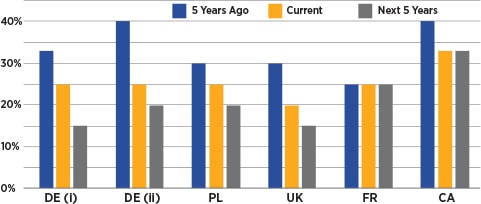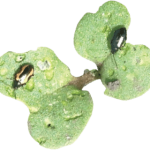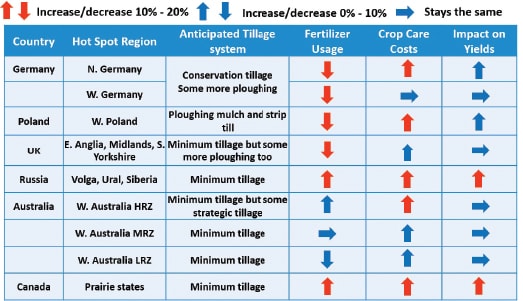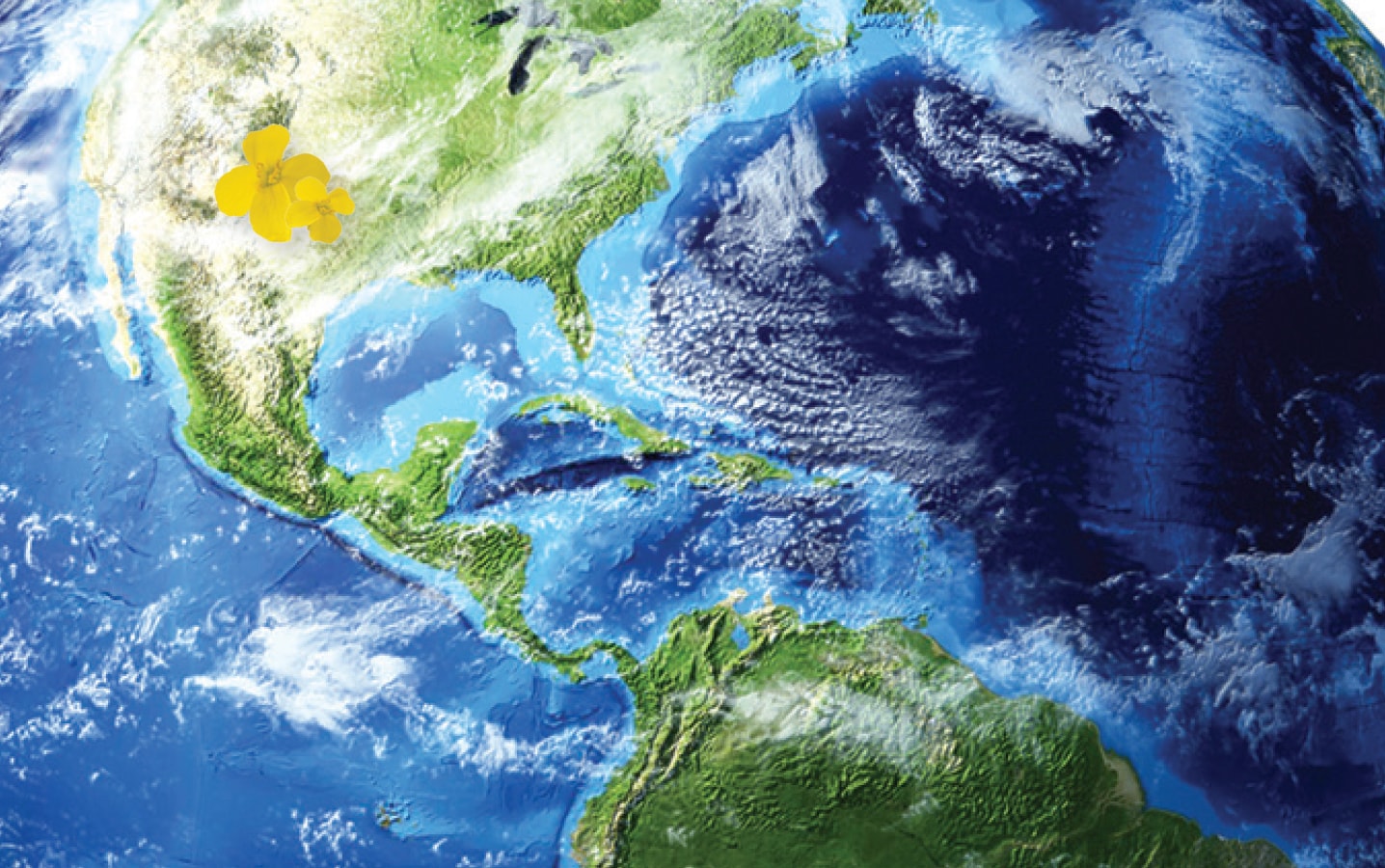Agronomic Pressures in Global Canola Production
Global production of canola saw significant expansion in the ’90s and 2000s, both in terms of area seeded and tonnes produced. Increased demand for vegetable oils and biofuels helped to support this expansion.
In Canada and Australia, the development of higher-yielding GM varieties helped to turn canola into a very attractive option for many farmers. In Western Europe, canola has proven to be a very good broadleaf break crop to wheat-dominated rotations. (Editor: In Europe, the crop name is rapeseed or oilseed rape, but we’ll call it canola for this article.) Not only has canola been much more profitable than other broadleaf break crop options, but it has even been competitive with wheat. It has not been uncommon for European farmers to include canola in their rotation one year in three or, in some cases, every other year in combination with wheat.

Of course, in large parts of Canada it is also quite common for canola to be grown every second year. For Canadian farmers, however, the situation European producers are now facing offers a potential snapshot into the agronomic issues that can arise with such narrow rotations, especially if the management tools and crop care products used to keep those issues suppressed become more regulated and restricted.
In Europe, canola is now facing some quite serious agronomic issues, especially with pests and diseases, that in some cases are making canola very difficult to grow on a regular basis.
A workshop conducted at the International Rapeseed Congress in Berlin in 2019 brought together production and agronomic experts from a number of major rapeseed-producing countries, including Canada, Germany, France, U.K., Poland and Australia, to discuss agronomic issues in global canola.
In Germany and U.K., cabbage stem flea beetle, in particular, is now a major concern that threatens the viability of growing canola altogether in some areas.
One of the clear findings from the workshop was the extent of the pest issues being faced in Europe, and the limited chemical options available to fight them. In Germany and U.K., cabbage stem flea beetle, in particular, is now a major concern that threatens the viability of growing canola altogether in some areas. In the U.K., year on year declines of 10 per cent have been recorded over the past three years, but that doesn’t factor in those crops that are planted in the autumn, only to fail and be ripped up in favour of spring crops. Anecdotal evidence therefore suggests the harvest area declines have been closer to 20 per cent year on year.
In all European countries, agronomic experts all cited the EU ban on neonic pesticide in 2015 as being a key factor behind these increased pest pressures. Alternative chemical options to neonics include pyrethroids, but these do not provide the same level of effectiveness against the likes of cabbage stem flea beetle, seed weevil, gall midge, pollen beetle and aphids, with issues of resistance becoming more prevalent.

This increased insect pest pressure has also invited greater incidence of disease, as damaged plants are weakened and therefore more susceptible to infection. As an example, turnip yellow virus has become a more notable problem in Europe, having benefited from the greater amounts of damage done by aphids since the removal of neonic treatments.
All European experts also cited the sharp increase in sclerotinia and verticillium as being at least partly as a result of pest damage “opening the door” to infection where this had not previously been such an issue.
In addition to a greater occurrence of diseases through infection after pest damage, tight rotations have also been highlighted as a key reason for the spread of disease. This is particularly the case with clubroot, which many experts believe has benefited from favourable climatic conditions of warm, wet soils at seeding time.
Because existing chemical fungicide treatments are not effective at treating clubroot, European farmers are using an integrated approach to management, including lime spreading and widening rotations. Development and use of clubroot-resistant varieties is also seen as being a key strategy, but without the availability of GM varieties, their effectiveness and the ability to maintain yields at current levels is a concern.
Canada Still has the Tools
While it is clear that many of the same insect and disease issues are present in Canada and Australia, the key difference is the variety of tools currently available to combat the issue.
The alternative options for European farmers in many instances now include more radical changes that would impact on the entire production system.
In Canada and Australia, both chemical and GM options are available for pest management in general, which help to moderate the impact of these infestations. Whereas in Europe, the primary chemical options have been much reduced in recent years, and those that remain are limited in number, subject to resistance, and under threat of removal as well. The alternative options for European farmers in many instances now include more radical changes that would impact on the entire production system.
The implication for this in Europe is that less canola would be grown each year with alternative break crops such as spring beans introduced instead. Alternative crops are often less profitable, which will result in reduced farm profits overall.
The alternative would be to carry on trying to grow canola, using the limited chemical options that are still available, but on a much more opportunistic basis. The problem with such an approach is that canola in Europe is a high investment crop – it is high risk but high reward.
Are farmers likely to persist with investing in an increasingly high-risk crop across large parts of their acreage?
Due to climatic conditions, Australian producers tend to view canola as an opportunistic crop – it is only planted when the growing conditions at the point of seeding are suited to a good establishment – so pre-meditated rotational share is not a common strategy.

Figure 2 shows the expectations on practices in canola production in the future. Most experts involved in the agri benchmark report believed that crop care costs will also go up, both as pest pressures continue to increase, but also as the product list diminishes further through regulation. In both the U.K. and Germany, yields are not expected to improve to compensate for this, although there is still yield potential in Poland as issues of winterkill are overcome both with changing climate and improved varieties.
While the Canadian experts also believed crop care costs would increase, there was also the expectation of significant further yield growth to offset this, partly through fertilizer usage, which is currently lower than in Europe.
While the Canadian experts also believed crop care costs would increase, there was also the expectation of significant further yield growth to offset this, partly through fertilizer usage, which is currently lower than in Europe.
In all countries, we are likely to see an increase in integrated management systems, whereby a combination of chemical, biological and mechanical strategies will be implemented together. Occasional changes to tillage practices, widening rotations and removal of green bridges (such as mustard crops, which host canola pests and reduce the benefit of crop rotation) were all suggested as combined strategies to combat pests in canola, both in the European countries and in Canada and Australia.
There appeared to be a realization that while Europe appears to be at the forefront when it comes to regulatory pressure on traditional chemical management options, Canada and Australia are not immune from the same issues becoming a threat in the near future. Negative perceptions persist around neonics, and this provides a major concern to Canadian producers given the impact the ban appears to have had in Europe in a relatively short space of time.
Fertilizer restrictions
Use of nitrogen fertilizers is also a growing issue in Europe; policy makers are keen to reduce nitrogen surpluses in the nutrient balance. Therefore, legislation has been passed in Germany that heavily restricts autumn application of nitrogen, and canola is particularly under threat due to the nitrogen surplus commonly left in the soil. The expectation is that other European countries will follow suit as part of the nitrate directives to improve water quality. The consequence will be lower yields and reduced profitability of canola and lower shares of canola in European rotations.
What does seem clear is that the peak years for canola production in Europe appear to be behind us, with acreage and production likely to go down especially in Western Europe. This may present opportunities for the likes of Canada and Australia, although many of the same issues could well manifest, especially if tight rotations continue and regulatory restrictions on crop care chemical options are applied.
A note on Russia. Thus far, canola provides only a relatively small share of its national crop output, with production knowhow and infrastructure both holding back expansion of production in many regions. However, there is scope for significant increases that could well be capable of fulfilling the reduction in Western European production, and more besides. The same pest pressures, or potential regulatory restrictions, do not appear to be such an issue there.





